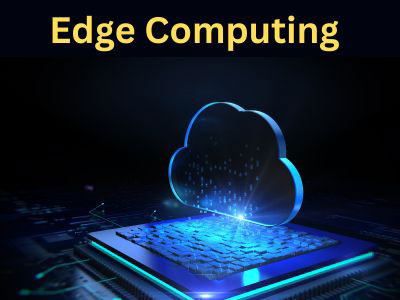Key Takeaway
Edge computing security involves protecting data and devices at the edge of the network. This includes securing devices, applications, and communication channels to prevent unauthorized access and breaches.
It uses encryption, firewalls, and regular updates to mitigate risks. A strong security framework ensures data integrity and privacy, which are crucial for businesses relying on edge computing.
Importance of Security in Edge Computing Environments
As edge computing moves more critical data processing to local devices, security becomes a major concern. Unlike traditional centralized cloud systems, edge computing involves a large number of distributed devices, each of which can be a potential target for cyberattacks. Because data is often processed and stored at the edge, ensuring that these devices and the communication between them are secure is essential to protect sensitive information and maintain system integrity.
The importance of security in edge computing environments cannot be overstated. Organizations need to implement strong encryption methods, multi-factor authentication, and secure protocols to protect data in transit. Additionally, edge devices should have robust access controls and security updates to minimize vulnerabilities. As edge computing systems become more integrated with IoT, ensuring that each device complies with security standards is critical for preventing data breaches and other malicious activities. Since many edge devices are located in remote or hard-to-reach areas, they also need to be designed for physical security. A breach at the edge could lead to significant disruptions, making it crucial to implement security measures at every layer of the edge computing network.

Common Threats to Edge Computing Networks
Edge computing networks face several common threats, including data breaches, unauthorized access, and malware attacks. The decentralized nature of edge environments makes them particularly vulnerable, as multiple points of entry increase the attack surface.
To combat these threats, engineers must implement strong encryption, multi-factor authentication, and regular software updates. Additionally, employing intrusion detection systems can help identify and mitigate threats in real-time. Security remains a top priority in the development and deployment of edge solutions.
Security Measures for Protecting Edge Devices
Securing edge devices is paramount in preventing data breaches and system disruptions. Physical security is the first line of defense, with tamper-resistant designs and secure enclosures deterring unauthorized access.
Encryption is critical for safeguarding data in transit and at rest. Implementing robust encryption protocols ensures that sensitive information remains protected even if intercepted. Access controls and authentication mechanisms further enhance security, allowing only authorized users to interact with edge systems.
Regular software updates and patch management address vulnerabilities, keeping devices resilient against emerging threats. Comprehensive security measures ensure the reliability and integrity of edge computing deployments.
Role of Encryption and Authentication in Edge Security
Encryption and authentication are cornerstones of edge computing security. As edge devices handle sensitive data, encryption ensures that information remains confidential and protected during transmission.
1. Encryption: Data encryption at the edge ensures that even if an attacker intercepts the communication, the data remains unreadable without the appropriate decryption keys. Both data at rest (stored data) and data in transit (being transmitted across networks) must be encrypted to prevent unauthorized access.
2. Authentication: Authentication mechanisms verify the identity of devices, users, and applications before granting access to network resources. Strong authentication methods, such as public key infrastructure (PKI), digital certificates, and token-based systems, ensure that only trusted devices and users can interact with edge networks.
Together, encryption and authentication help protect the confidentiality, integrity, and availability of data and devices in edge environments, enabling secure communication between devices, users, and cloud systems. These security practices ensure that sensitive information is not exposed during processing or transit, making edge computing more reliable for industries that depend on secure operations.
Emerging Trends in Edge Computing Cybersecurity
As edge computing continues to grow, new cybersecurity challenges and solutions are emerging. The rise of connected devices and the expansion of edge networks have made edge computing environments more vulnerable to sophisticated cyber threats. Some of the emerging trends in edge computing cybersecurity include:
1. AI-Driven Security: Artificial intelligence (AI) is increasingly being used to detect and respond to security threats in real-time. AI can analyze vast amounts of data, recognize patterns, and identify potential threats before they become a serious problem.
2. Zero Trust Security Model: The zero-trust model assumes that all devices, both inside and outside the network, could be compromised. This approach requires continuous verification of devices and users, reducing the chances of unauthorized access.
3. Blockchain for Edge Security: Blockchain technology is gaining traction in securing data at the edge by providing transparent, immutable records of transactions. This can be particularly useful in industries requiring high levels of accountability and traceability.
4. Edge-Specific Security Solutions: As edge computing grows, specialized security solutions tailored to edge environments are emerging. These solutions focus on addressing the unique challenges of distributed, low-latency, and resource-constrained systems.
Conclusion
Edge computing is transforming industries by enabling faster processing, reduced latency, and improved data-driven decision-making. However, this decentralization comes with a unique set of cybersecurity challenges. Securing edge devices, networks, and data is crucial for maintaining the integrity and reliability of edge computing systems.
By implementing strong encryption, authentication, regular updates, and robust physical security, industries can mitigate risks and enhance the security of their edge computing environments. Moreover, emerging technologies like AI, blockchain, and zero-trust security will continue to play an important role in enhancing edge security.
As more industries embrace edge computing, securing these networks will be essential to ensuring their continued success and reliability.
